April 24 - 30 2016: Issue 260
The Porter Family- Newport: Five Soldier Brothers Who Served During World War I

'Episode after Battle of Zonnebeke 1918' - Battle of Polygon Wood -Australian soldiers in trenches at the Battle of Polygon Wood. The Battle of Zonnebeke, 1918- Photo by Capt. Frank Hurley
Foundation Newport SLSC members Carl and Sidney Porter, along with fellow members in brothers Albert Edward, William James and Robert Daniel Porter, are a family of young men who all served in the ‘Great War’ – World War One.
Of the five young men who went overseas in also relatively young A.I.F. only two came home. None of the three who did not have any known grave. Two were killed in action in France, amid some of the most terrible battles that occurred there, and the one other, the first to be lost, died at Hill 60, Gallipoli, Turkey, on 22 August 1915, aged 25.
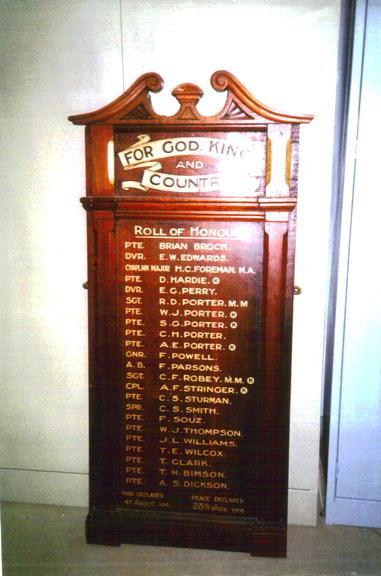 Apart from the Memorial in Trafalgar Park at which wreaths are placed to honour those who have served, the names of Newport residents who have served Australia during times of conflict may not be readily seen on Honour Boards unless you visit Newport SLSC’s clubhouse or were fortunate to see Mona Vale Library’s National Trust Heritage Festival event of 2015 when a photographic display of the 'Honour Rolls of Pittwater’ was available from May 4 to 17.
Apart from the Memorial in Trafalgar Park at which wreaths are placed to honour those who have served, the names of Newport residents who have served Australia during times of conflict may not be readily seen on Honour Boards unless you visit Newport SLSC’s clubhouse or were fortunate to see Mona Vale Library’s National Trust Heritage Festival event of 2015 when a photographic display of the 'Honour Rolls of Pittwater’ was available from May 4 to 17.
As Mona Vale Library said around this time last year, “Honour rolls were often the first type of memorial erected to honour those who enlisted in WWI.”
The Honour rolls featured were found in local churches, schools, surf clubs and shire offices. Mona Vale Library were hoping members of the public would come forward with any information about the soldiers honoured on these boards.
As part of this year’s ANZAC Day preludes we wish to honour the men behind the names, from one family, who appear on these Newport honour boards and share an insight into the service they gave to Australia.
The first Honour Board at Newport from World War I was the result of collaboration between William Fairley, principal of Newport Public School and Carl Porter, after whom Porter’s Reserve in Newport is named.
Right: Stone Memorial from Mona Vale Methodist Church, from MVL Local History Unit - Image No. MV240.
The Board for WWII was arranged by Mr. Sanderson a later principal at Newport PS, and Mr. Porter.
Carl Horwood Porter was the third youngest son, of seven sons and two daughters, of Robert and Ann Porter (nee Ratley). NSW’s BDM’s lists all their children Birth records at Manly.
Mr. Robert Porter Snr. came to Newport from Manly – he was a maintenance man on the roads, appearing in a Warringah Shire Council minute of meeting as early as their 12th Meeting in 1906 , 'attesting to the accuracy of his worksheet'. Acounts passed for payment at this Meeting were: '£9 - 2 - 10' - Robert Porter.
Mr. Porter's work stretched from the 9 mile peg to Barranjoey as well as to Bayview and Church Point. He also ensured Newport Public school had adequate firewood during the colder months for years when this was the means for keeping pupils warm.
PORTER-RATTLEY. - At Waverley, in the Wesleyan Church, by the Rev. K. A. Corner, Robert Porter, late of Hoddesdon, Herts, to Ann, third daughter of Mr. David Rattley, of Stroud. Family Notices (1884, August 13). The Sydney Morning Herald (NSW : 1842 - 1954), , p. 1. Retrieved from http://nla.gov.au/nla.news-article13559577
Hoddesdon is a town in the Broxbourne borough of the English county of Hertfordshire, situated in the Lea Valley. It grew up as a coaching stop on the route between Cambridge and London. - Wikipedia
Ann was born in 1859 to David (some sources state ‘Daniel’) Rattley and Ann Horwood, the 3rd eldest daughter of seven girls and two sons. Her parents married shortly before immigrating to Australia, arriving on board the "Rose of Sharon" on April 13, 1855. They couple were devout Methodists; a faith Carl also practiced, and gave to his sons, and promulgated in word, action and attitude, even after or especially because of what he had experienced.
The children of Robert and Ann Porter, and year of birth:
20261/1894 PORTER CARL H ROBERT ANN MANLY
4582/1899 PORTER LUCY M ROBERT ANN MANLY
12236/1885 PORTER FRANCES M ROBERT ANN MANLY
13099/1886 PORTER ROBERT D ROBERT ANN MANLY
20940/1890 PORTER WILLIAM J ROBERT ANNIE MANLY
14196/1901 PORTER SEPTIMUS E ROBERT ANN MANLY
32040/1896 PORTER WALTER S ROBERT ANNIE MANLY
32041/1896 PORTER ALBERT E ROBERT ANNIE MANLY
21623/1892 PORTER SYDNEY G ROBERT ANNIE MANLY
The family’s home, in the Avenue, Newport, is on early cartographic sales maps dated 1900, and was called simply “Home” during a prolonged era when people gave names to their homes. This choice may indicate a family that wanted just that, a home, or that the warmth and love that fills a house and makes it a home thrived there.
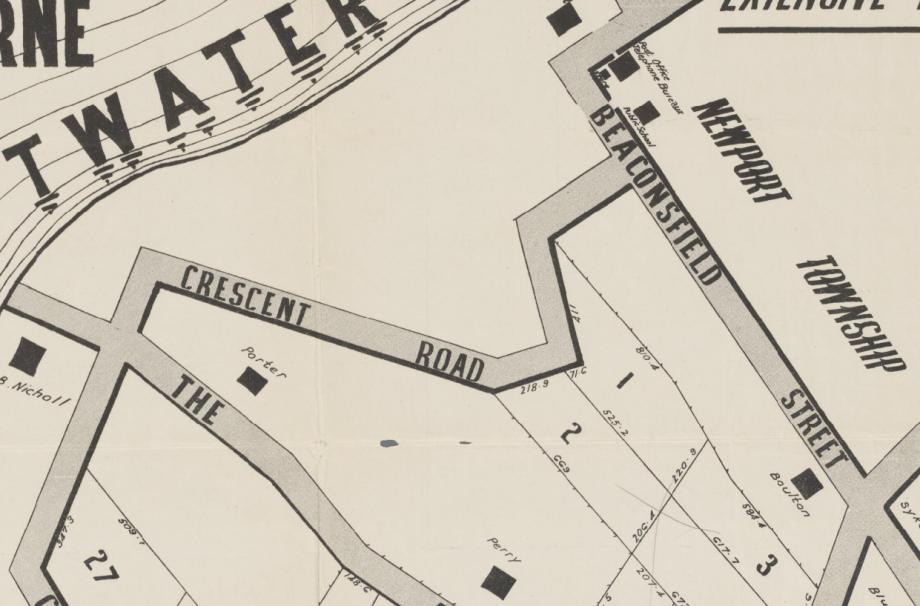
Section from: Sales plan for land in Mona Vale, New South Wales. "A.W. Stephen, licensed surveyor RPA, 47 Castlereagh Street". Sales plan of Mona Vale estate, Pittwater. Mona Vale [cartographic material]. Mona Vale estate, Pittwater [cartographic material] 1900 - 1909. MAP Folder 103, LFSP 1554. Courtesy National Library of Australia.
The article that began inspired an investigation into the Porter brothers service:
FIVE SOLDIER BROTHERS.
PRIVATE BERT PORTER, . 10. PRIVATE CARL PORTER, PRIVATE SIDNEY' PORTER, 23. PRIVATE ROBERT D. PORTER, 20. SONS OF MR. ROBERT PORTER, OF NEWPORT, MANLY. PRIVATE WILLIAM JAMES PORTER, 25 (wounded).
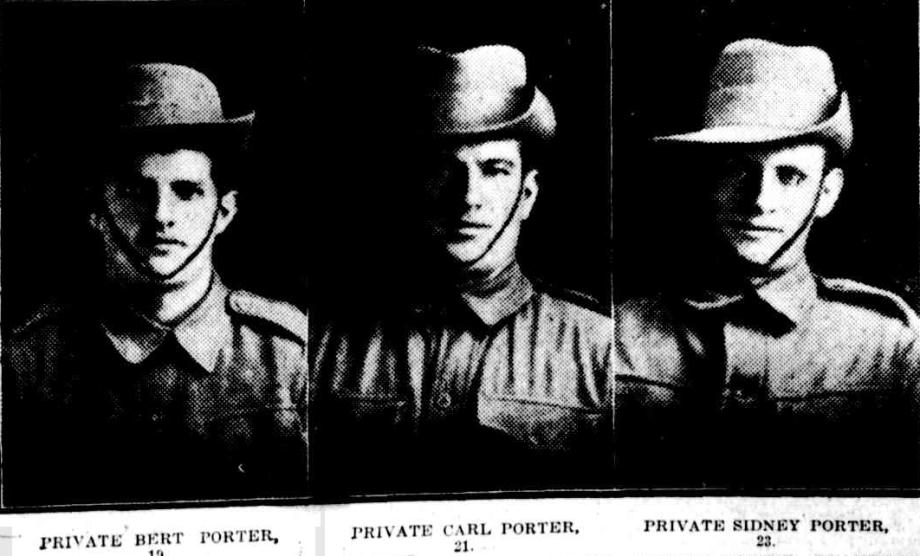
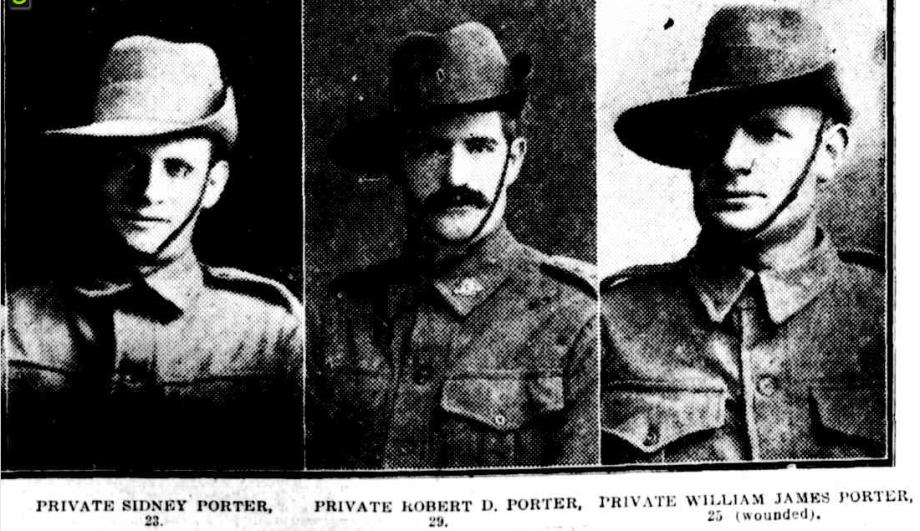
Mr. and Mrs. Robert Porter, of Newport, have reason to be proud of their sons, five of whom have enlisted and are at, or on their way to the front.
The first of the sons to get into khaki was William, aged 23. He went away from Sydney with one of the first contingents, and going through the famous landing at Gabe Tepe on April 25 scatheless, he was in the trenches for nearly four months before he was wounded. His parents were officially advised of his casualty at the time, but since then no news has reached them as to his condition, notwithstanding the fact that a number of inquiries have been made.
Robert, the eldest son, aged 29, was the next one to see his path of duty. The other three sons, Sydney, aged 23, Carl, 21, and Bert, 19, left recently with one of the contingents from Sydney for the front. FIVE SOLDIER BROTHERS. (1916, January 22). The Sydney Morning Herald (NSW : 1842 - 1954), , p. 10. Retrieved from http://nla.gov.au/nla.news-article15638624
 Private (Pte) William James Porter, 13th Battalion, was a policeman prior to enlistment. He embarked with B Company from Melbourne on HMAT Ulysses on 22 December 1914.
Private (Pte) William James Porter, 13th Battalion, was a policeman prior to enlistment. He embarked with B Company from Melbourne on HMAT Ulysses on 22 December 1914.
Right: Studio Portrait William James, courtesy Australian War Memorial
He was killed in action at Hill 60, Gallipoli, Turkey, on 22 August 1915, aged 25.
He has no known grave and is commemorated on the Australian Memorial at Lone Pine.
Robert Daniel Porter enlisted on July 2nd, 1915, at Liverpool - listing his age as 28 years and 8 months and stating he had done a 5 year apprenticeship with G S Brock, listing his trade as ‘Carpenter’. He left Australia on October 5th, 1915, arriving 6/1/1916 at Tebel Kebir.
Appointed Lt. Corporal ‘In The Field” 26.10.1916
5.12.1916 – admitted to Hospital ‘Influenza’ – at New Zealand Staff Hospital (in the Field) – was transferred to Ambulance Train and sent to No 6 General Hospital in Rouen. He finally was released on December 19th and ‘marched to his unit’ and listed as ‘ex-Hospital’ on 5/1/1917 in France.
Promoted to Corporal 6.2.1917
Transferred to England as Instructor on 22.3.1917, attended Number 1 Officers DNCO’s School and qualified 18.6.1917. In command at Musketry school at Tidsworth – ex 1st Eng., Btn. Durrington 2.7.1917
On 8.10.1917 he was ‘absorbed on strength to 1st Btn. A.I.F. sent to France 20.11.1917
22.11.1917 – sent to hospital – sick – his condition listed as ‘Influenza’ once again. 5.2.1918 – sent to hospital again - sick.
On the 17.4.1918 he was wounded in action, his files records '20.4.1918 – requests to be returned to unit'
5.6.1918 – promoted to Sergeant
On the 18.9.1918 he is wounded in action again and sent to B’ham War Hospital Rednal on 28.9.1918 –"(S.W. abdomen and GSW Bullet in right hip) – 2nd incident – invalided to UK"
On the 30.8.1918 he is Awarded Military Medal. 24.1.1919 – sergeant returned to Australia per “Gargha” or ‘Yargha’
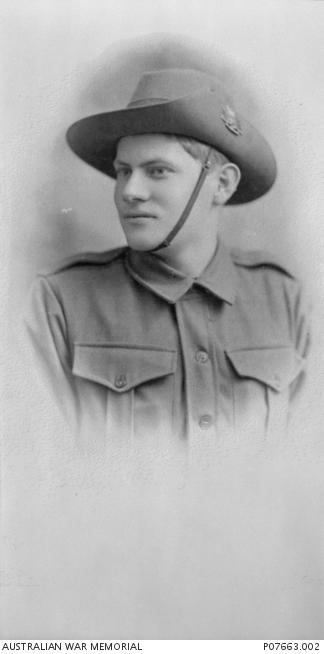 Sydney (spelt in his records ‘Sidney’) George Porter enlisted on October 4th, 1915. He enlisted at Holdsworthy, was assigned to 14th Rein., 3rd Battalion, listing his age as 23 and his occupation as ‘Labourer’. He embarked on the H.M.A.T. R.M.S. “Osterley” on January 15th, 1916. He was transferred from Alexandria on 29/3/1916, per ‘Transylvania’ to France.
Sydney (spelt in his records ‘Sidney’) George Porter enlisted on October 4th, 1915. He enlisted at Holdsworthy, was assigned to 14th Rein., 3rd Battalion, listing his age as 23 and his occupation as ‘Labourer’. He embarked on the H.M.A.T. R.M.S. “Osterley” on January 15th, 1916. He was transferred from Alexandria on 29/3/1916, per ‘Transylvania’ to France.
On June 14th he was wounded ‘slightly’ – then, on June 16th he was wounded in action at Wimereux (GSW – Gun Shot Wound, to the chest, and another to right hand) – 17/6/: admitted to 2nd. Australian Field Ambulance and transferred to England per “St. Denis” where on the 25th of June, 1916 he was admitted to York House Hospital, 1st Auxiliary Hospital. A telegram sent to his father listed this wound as ‘severe’, who wrote in July 1916 inquiring if there was any further news.
On October 1st, 1916 he left England and was assigned to the 53rd Battalion in France.
He too is noted as doing the Musketry Course in January 1917 and he too was sent to hospital sick on April 7th, 1917 only his condition is listed as ‘S.T. ABR Feet’ – more commonly known as ‘Trench Foot’, a condition many soldiers fighting in the First World War suffered from. This was an infection of the feet caused by cold, wet and insanitary conditions and where men had to stand for hours and days in waterlogged trenches. If untreated, trench foot could turn gangrenous and result in amputation. Trench foot was a particular problem in the early stages of the war. As an example, during the winter of 1914-15 over 20,000 men in the British Army were treated for trench foot. Brigadier-General Frank Percy Crozier argued that: " The fight against the condition known as trench-feet had been incessant and an uphill game."
Sydney’s clearly did not get better, as on April 18th he was diagnosed with ‘I.C.T. – left foot’ and transferred to England again, this time on the H.S. ‘Princess Elizabeth’.
He was discharged on June 11th, given some furlough, and told to report to Perham Downs in July. Soon afterwards he was sent back to France and rejoined the 53rd Battalion in the Havre.
On the 28th of September 1917 he was listed as ‘killed in action in the field’: ANZAC Section G.H.Q. British Expeditionary Force.
The 53rd Battalion was raised in Egypt on 14 February 1916 as part of the "doubling" of the AIF. Half of its recruits were Gallipoli veterans from the 1st Battalion, and the other half, fresh reinforcements from Australia. Reflecting the composition of the 1st, the 53rd was predominantly composed of men from the suburbs of Sydney. The battalion became part of the 14th Brigade of the 5th Australian Division.
The battalion arrived in France on 27 June 1916, entered the front line for the first time on 10 July, and became embroiled in its first major battle on the Western Front, at Fromelles, on 19 July. The battle of Fromelles was a disaster. The 53rd was part of the initial assault and suffered grievously, incurring 625 casualties, including its commanding officer, amounting to over three-quarters of its attacking strength. Casualty rates among the rest of the 5th Division were similarly high, but despite these losses it continued to man the front in the Fromelles sector for a further two months.
The 53rd spent the freezing winter of 1916-17 rotating in and out of trenches in the Somme Valley. During this period the battalion earned the nickname "the Whale Oil Guards" after the CO, Lieutenant Colonel Oswald Croshaw, ordered the troops to polish their helmets with whale oil (issued to rub into feet as a trench foot preventative) for a smart turn out on parade. In March 1917, the 53rd participated in the advance that followed the German retreat to the Hindenburg Line. It was spared the assault but did, however, defend gains made during the second battle of Bullecourt. Later in the year, the AIF's focus of operations switched to the Ypres sector in Belgium. The 53rd's major battle here was at Polygon Wood on 26 September.
Third Battle of Ypres
The Third Battle of Ypres was the major British offensive in Flanders in 1917. It was planned to break through the strongly fortified and in-depth German defences enclosing the Ypres salient, a protruding bulge in the British front line, with the intention of sweeping through to the German submarine bases on the Belgian coast. The battle comprised of a series of limited and costly offensives, often undertaken in the most difficult of waterlogged conditions - a consequence of frequent periods of rain and the destruction of the Flanders' lowlands drainage systems by intense artillery bombardment. As the opportunity for breakthrough receded, Haig still saw virtue in maintaining the offensives, hoping in the process to drain German manpower through attrition. The main battles associated with Third Battle of Ypres were:
- Pilckem, 31 July to 2 August
- Langemarck, 16-18 August
- Menin Road, 20-25 September
- Polygon Wood, 26 September to 3 October
- Broodseinde, 4 October
- Poelcapelle, 9 October
- Passchendaele (First Battle), 12 October
- Passchendaele (Second Battle), 26 October to 10 November.
Australian Divisions participated in the battles of Menin Road, Polygon Wood, Broodseinde, Poelcapelle and the First Battle of Passchendaele. In eight weeks of fighting Australian forces incurred 38,000 casualties. The combined total of British and Dominion casualties has been estimated at 310,000 (estimated German losses were slightly lower) and no breakthrough was achieved. The costly offensives, ending with the capture of Passchendaele village, merely widened the Ypres salient by a few kilometres.
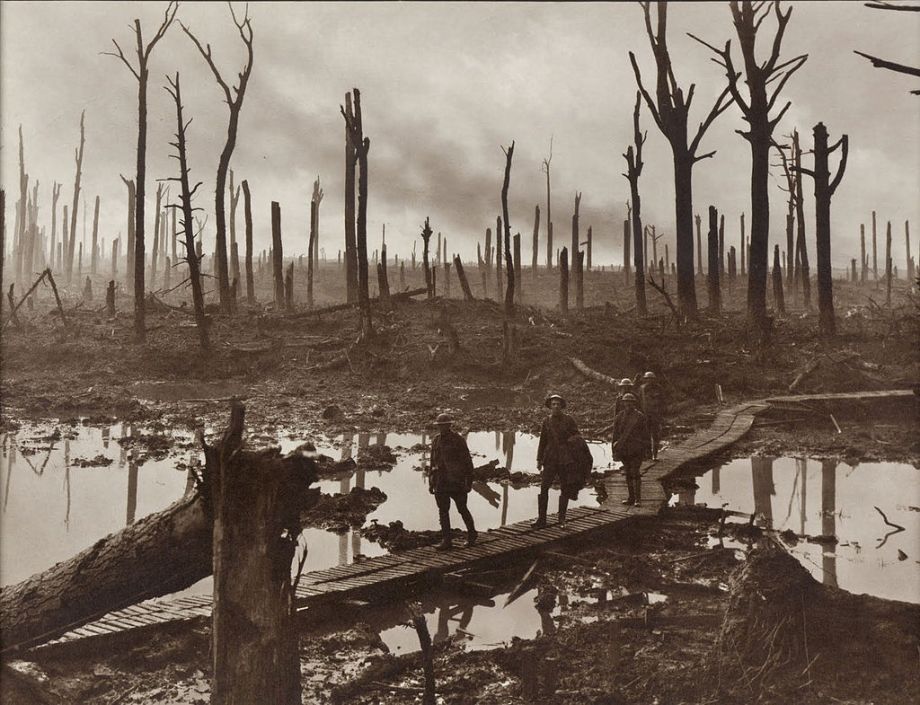
Soldiers of an Australian 4th Division field artillery brigade on a duckboard track passing through Chateau Wood, near Hooge in the Ypres salient, 29 October 1917. The leading soldier is Gunner James Fulton and the second soldier is Lieutenant Anthony Devine. The men belong to a battery of the 10th Field Artillery Brigade. Australian War Memorial E01220. Frank Hurley Photograph.
The Battle of Passchendaele, also known as the Third Battle of Ypres, was a campaign of the First World War, fought by the Allies against the German Empire. The battle took place on the Western Front, from July to November 1917, for control of the ridges south and east of the Belgian city of Ypres in West Flanders, as part of a strategy decided by the Allies at conferences in November 1916 and May 1917. Passchendaele lay on the last ridge east of Ypres, 5 miles (8.0 km) from a railway junction at Roulers, which was vital to the supply system of the German 4th Army. The next stage of the Allied plan was an advance to Thourout–Couckelaere, to close the German-controlled railway running through Roulers and Thourout.
Further operations and a British supporting attack along the Belgian coast from Nieuwpoort, combined with Operation Hush (an amphibious landing), were to have reached Bruges and then the Dutch frontier. The resistance of the German 4th Army, unusually wet weather, the onset of winter and the diversion of British and French resources to Italy, following the Austro-German victory at the Battle of Caporetto(24 October – 19 November), enabled the Germans to avoid a general withdrawal, which had seemed inevitable in early October. The campaign ended in November, when the Canadian Corps captured Passchendaele, apart from local attacks in December and the new year. In 1918, the Battle of the Lys and the Fifth Battle of Ypres were fought before the Allies occupied the Belgian coast and reached the Dutch frontier.
A campaign in Flanders was controversial in 1917 and has remained so. The British Prime Minister Lloyd George opposed the offensive, as did General Ferdinand Foch the French Chief of the General Staff. Field Marshal Douglas Haig, commanding the British Expeditionary Force, did not receive approval for the Flanders operation from the War Cabinet until 25 July. Matters of dispute by the participants, writers and historians since the war, have included the wisdom of pursuing an offensive strategy in the wake of the Nivelle Offensive, rather than waiting for the arrival of the American Expeditionary Forces in France.
The choice of Flanders over areas further south or the Italian front, the climate and weather in Flanders, the choice of General Hubert Gough and the Fifth Army to conduct the offensive, debates over the nature of the opening attack and between advocates of shallow and deeper objectives, have also been controversial. The passage of time between the Battle of Messines (7–14 June) and the opening attack of the Battles of Ypres, the extent to which the internal troubles of the French armies motivated British persistence with the offensive, the effect of the weather, the decision to continue the offensive in October and the human cost of the campaign on the soldiers of the German and British armies, have also been argued over ever since.
Battle of Polygon Wood
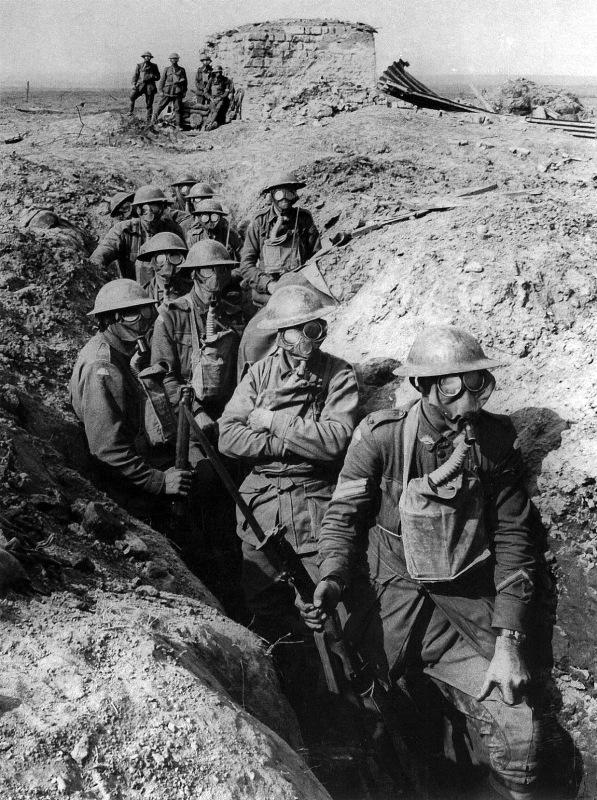
Australian infantry with small box respirator gas masks, Ypres, September 1917. Photo by Captain Frank Hurley. - This image is available from the Collection Database of the Australian War Memorial under the ID Number: E00825
The Second Army altered its Corps frontages soon after the attack of 20 September, for the next effort (26 September – 3 October)so that each attacking division could be concentrated on a 1,000 yards (910 m) front. Roads and light railways were extended to the new front line, to allow artillery and ammunition to be moved forward. The artillery of VIII Corps and IX Corps on the southern flank, simulated preparations for attacks on Zandvoorde and Warneton. At 5.50 a.m. on 26 September, five layers of barrage fired by British artillery and machine-guns began. Dust and smoke thickened the morning mist and the infantry advanced using compass bearings.[108] Each of the three German ground-holding divisions attacked on 26 September, had an Eingreif division in support, twice the ratio of 20 September. No ground captured by the British was lost and German counter-attacks managed only to reach ground to which survivors of the front-line divisions had retired.
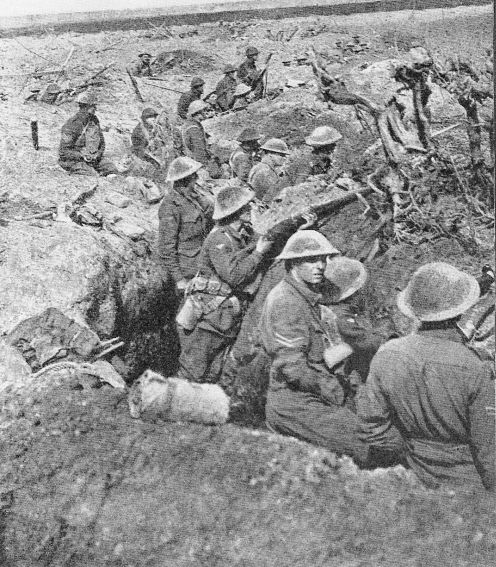
Australian soldiers at the Battle of Polygon Wood. Australian soldiers in trenches at the Battle of Polygon Wood. Courtesy State Library of New South Wales https://en.wikipedia.org/wiki/Battle_of_Polygon_Wood
At the Battle of Fromelles in July 1916, where the battalion took part in the first stages of the Allied attack they suffered over 600 casualties, a total which equated to around a third of their total casualties for the war.
His name is listed: The Ypres (Menin Gate) Memorial (Panel 53), Belgium
The Menin Gate Memorial (so named because the road led to the town of Menin) was constructed on the site of a gateway in the eastern walls of the old Flemish town of Ypres, Belgium, where hundreds of thousands of allied troops passed on their way to the front, the Ypres salient, the site from April 1915 to the end of the war of some of the fiercest fighting of the war.
The Memorial was conceived as a monument to the 350,000 men of the British Empire who fought in the campaign. Inside the arch, on tablets of Portland stone, are inscribed the names of 56,000 men, including 6,178 Australians, who served in the Ypres campaign and who have no known grave.
The opening of the Menin Gate Memorial on 24 July 1927 so moved the Australian artist Will Longstaff that he painted 'The Menin Gate at Midnight', which portrays a ghostly army of the dead marching past the Menin Gate. The painting now hangs in the Australian War Memorial, Canberra, at the entrance of which are two medieval stone lions presented to the Memorial by the City of Ypres in 1936.
Since the 1930s, with the brief interval of the German occupation in the Second World War, the City of Ypres has conducted a ceremony at the Memorial at dusk each evening to commemorate those who died in the Ypres campaign.
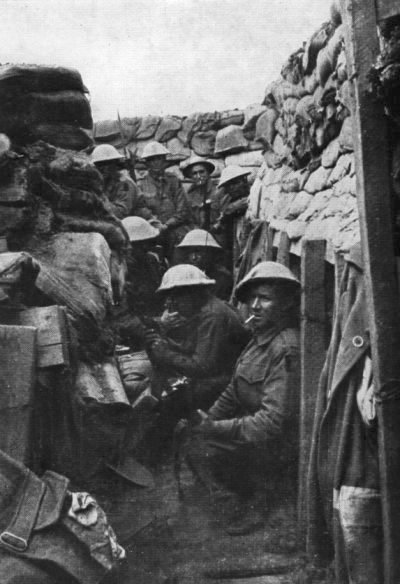
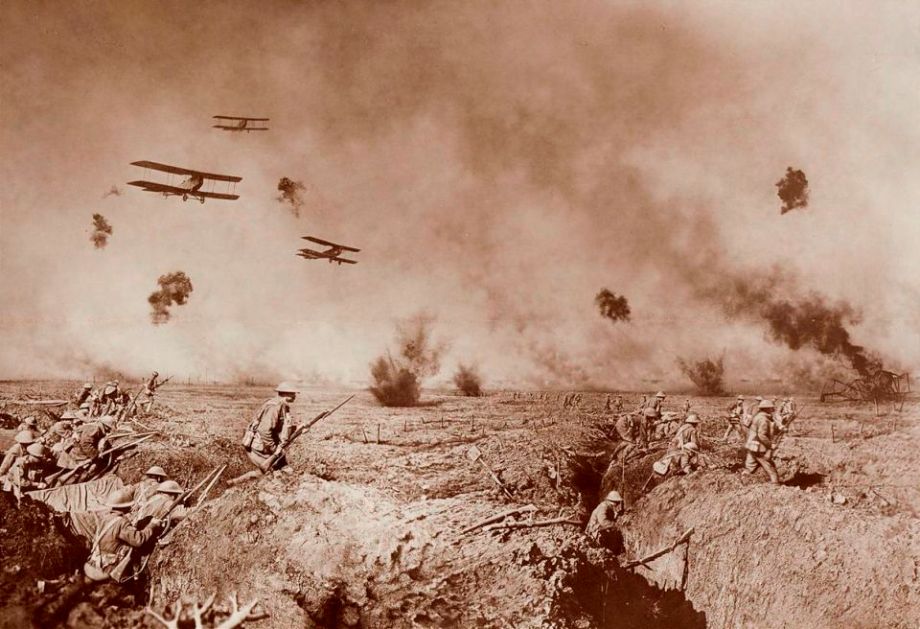
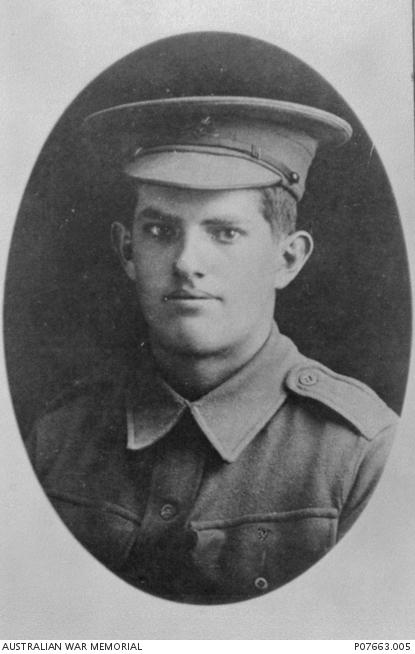 Albert (Bert) Edward Porter was 18 years and 11 months when he enlisted on the 15th of September, 1915, at Holdsworthy, listing his occupation as “Labourer” – his height was 5 feet 6 ½ inches, his weight 138 pounds. Due to his age he was required to get the signature of both his parents on a consent form. Albert was assigned to the 14th Rein., 3rd Battalion.
Albert (Bert) Edward Porter was 18 years and 11 months when he enlisted on the 15th of September, 1915, at Holdsworthy, listing his occupation as “Labourer” – his height was 5 feet 6 ½ inches, his weight 138 pounds. Due to his age he was required to get the signature of both his parents on a consent form. Albert was assigned to the 14th Rein., 3rd Battalion.He has no known grave and is commemorated at the Australian War Memorial at Villers Bretonneux France.
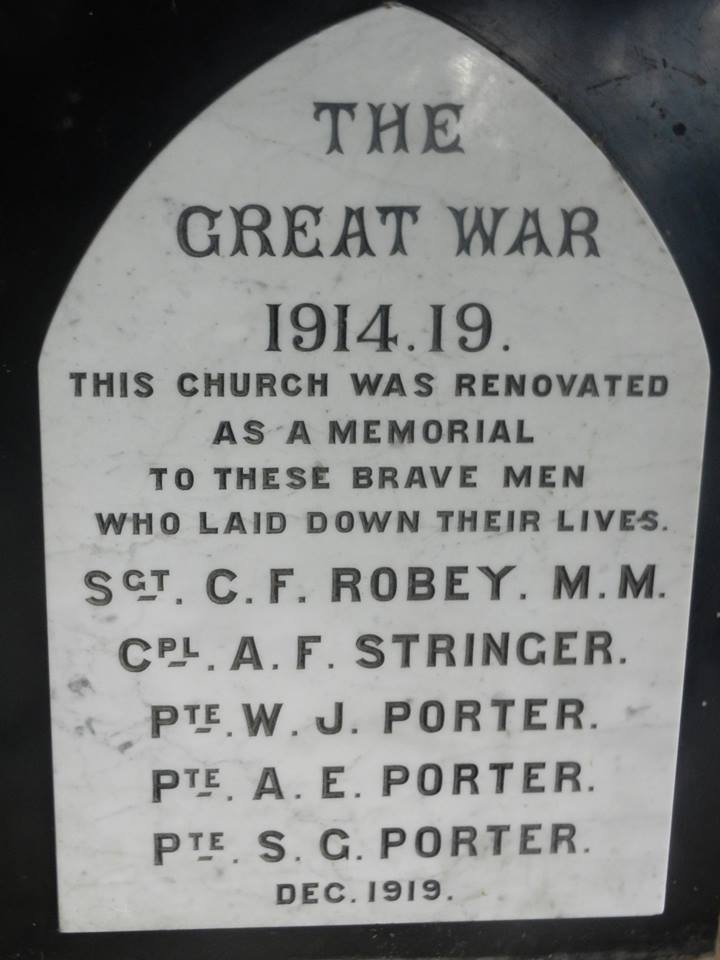
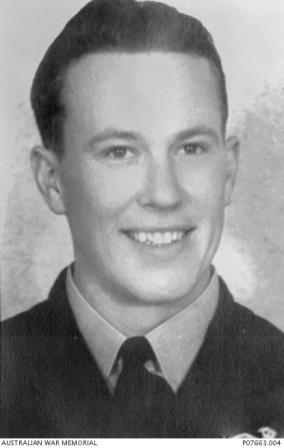 This influenza was called 'Spanish' as wartime censors were minimising the reports of this disease causing illness and death coming out of France, Germany, Britain but had no problem with its effects in Spain being reported.
This influenza was called 'Spanish' as wartime censors were minimising the reports of this disease causing illness and death coming out of France, Germany, Britain but had no problem with its effects in Spain being reported.He passed away in 1979.
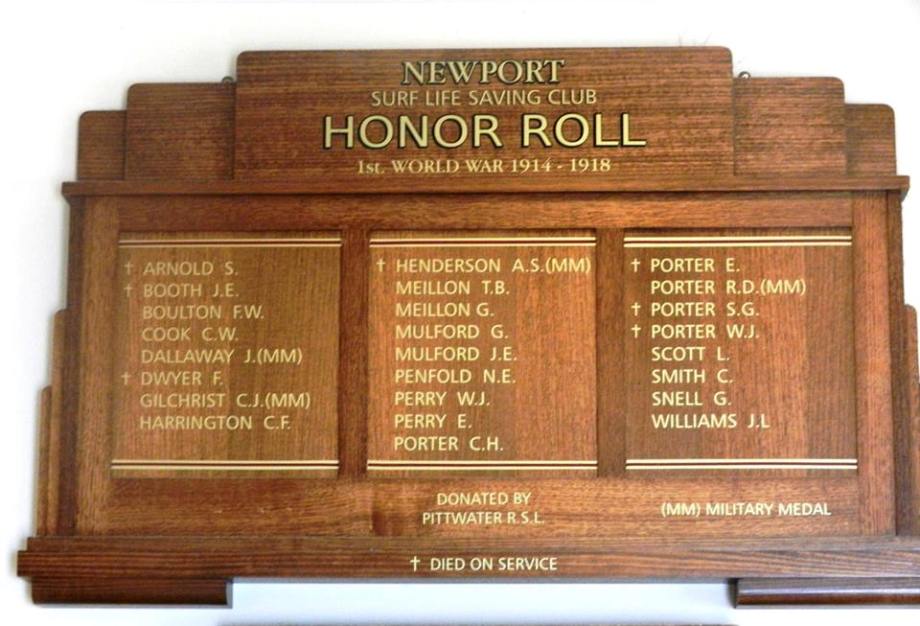
Methodism, or the Methodist movement, is a group of historically related denominations of Protestant Christianity which derive their inspiration from the life and teachings of John Wesley. George Whitefield and John's brother Charles Wesley were also significant leaders in the movement. It originated as a revival within the 18th-century Church of England and became a separate Church after Wesley's death. Because of vigorous missionary activity, the movement spread throughout the British Empire, the United States, and beyond, today claiming approximately 80 million adherents worldwide.
Distinguishing Methodist doctrines include Christian perfection, an assurance of salvation, the priesthood of all believers, the primacy of scripture and works of piety. Methodism also emphasises "social holiness", missionary zeal, charity, and service to the poor and vulnerable. These ideals are put into practice by the establishment of hospitals, universities, orphanages, soup kitchens, and schools to follow Jesus Christ's command to spread the Good News and serve all people. Most Methodists teach that Christ died for all of humanity, not just for a limited group, and thus everyone is entitled to God's grace and protection; in theology, this view is known as Arminianism. It denies that God has pre-ordained an elect number of people to eternal bliss while others are doomed to hell no matter what they do in life. However, Whitefield and several others were considered Calvinistic Methodists.
John Wesley is studied by Methodist ministerial students and trainee local preachers for his interpretation of Church practice and doctrine. At its heart, the theology of John Wesley stressed the life of Christian holiness: to love God with all one's heart, mind, soul and strength and to love one's neighbour as oneself.
The Methodist movement has a wide variety of forms of worship, ranging from high church to low church in liturgical usage. Denominations that descend from the British Methodist tradition tend toward a less formal worship style, while American Methodism—in particular the United Methodist Church—is more liturgical. Methodism is known for its rich musical tradition; Charles Wesley was instrumental in writing much of the hymnody of the Methodist Church, and many other eminent hymn writers come from the Methodist tradition.
Early Methodists were drawn from all levels of society, including the aristocracy, but the Methodist preachers took the message to labourers and criminals who tended to be left outside organized religion at that time. In Britain, the Methodist Church had a major effect in the early decades of the making of the working class (1760–1820). In the United States it became the religion of many slaves who later formed "black churches" in the Methodist tradition.
Methodism was endowed by the Wesley brothers with worship characterised by a twofold practice: the ritual liturgy of the Book of Common Prayer on the one hand and the informal preaching service on the other.
It is a historical position of the church that any disciplined theological work calls for the careful use of reason. By reason, it is said, one reads and is able to interpret the Bible coherently and consistently. By reason one asks questions of faith and seeks to understand God's action and will. Methodism insists that personal salvation always implies Christian mission and service to the world. Scriptural holiness entails more than personal piety; love of God is always linked with love of neighbours and a passion for justice and renewal in the life of the world.
From: Methodism. (2016, April 22). In Wikipedia, The Free Encyclopedia. Retrieved from https://en.wikipedia.org/w/index.php?title=Methodism&oldid=716607792
Also Visit: Newport Public School 1888 To 2016
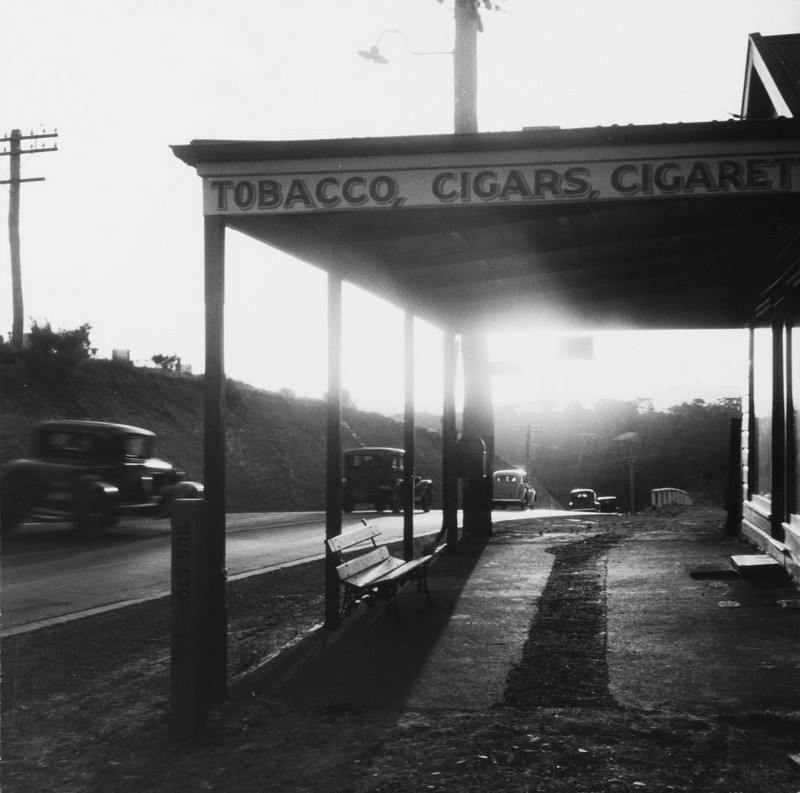
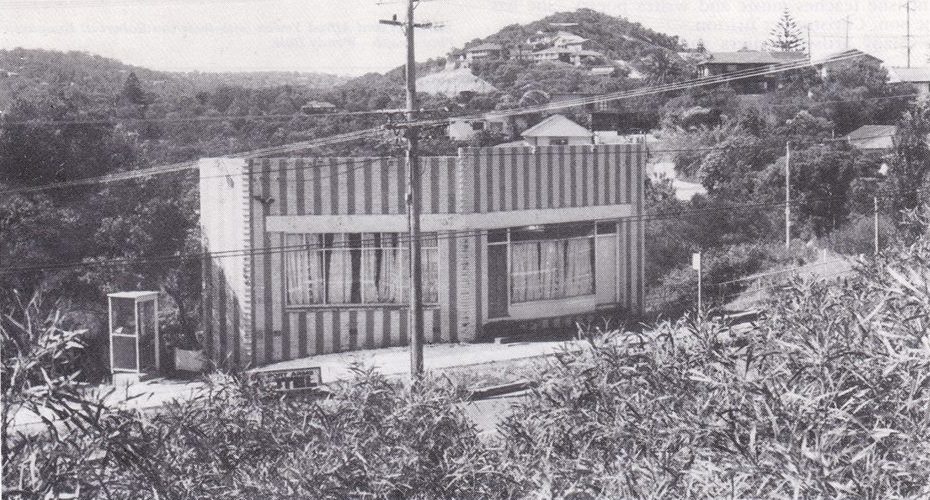
Avalon Beach RSL Cenotaph Memorial Pavers:
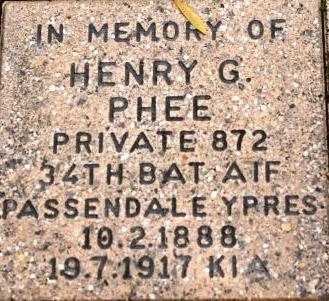
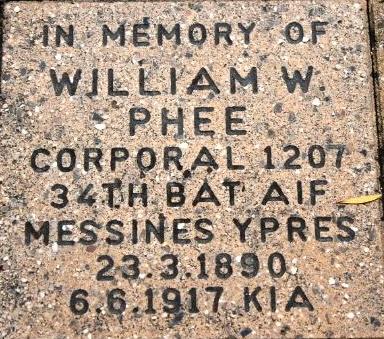
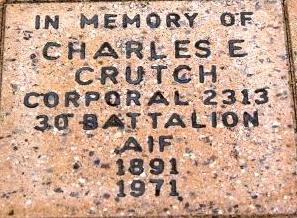
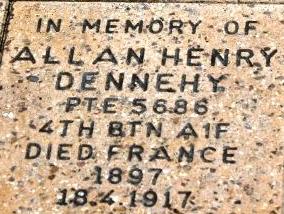
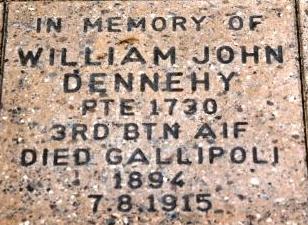
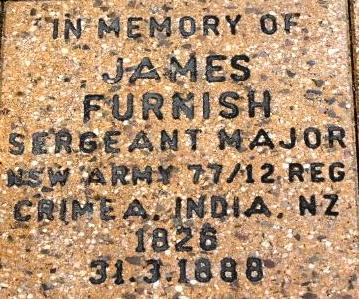
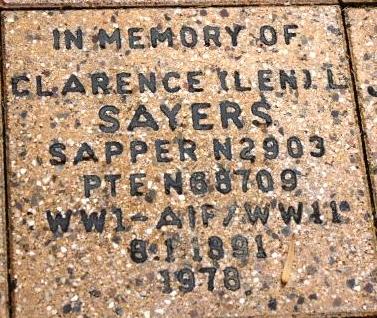
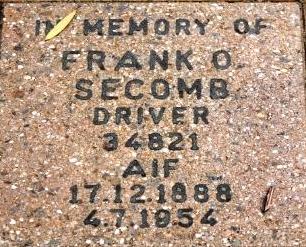
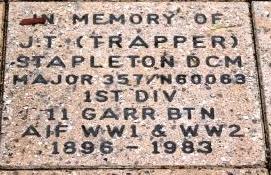
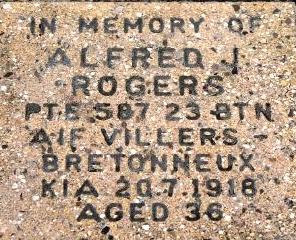
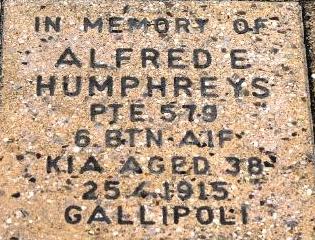
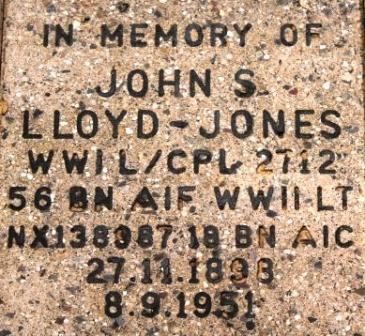
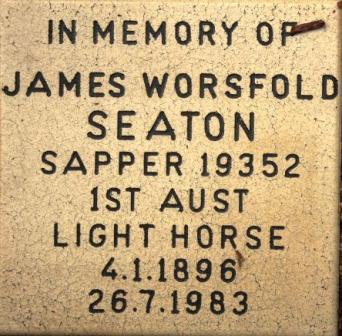
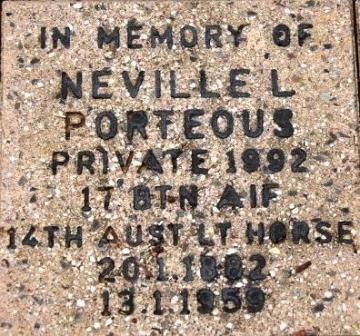
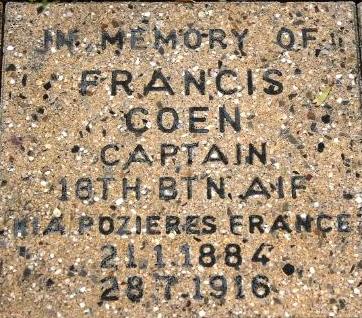
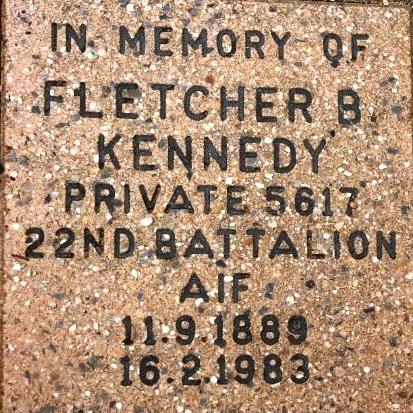
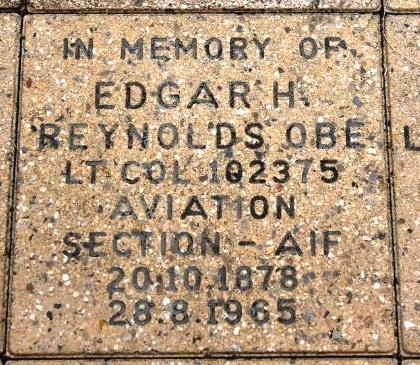
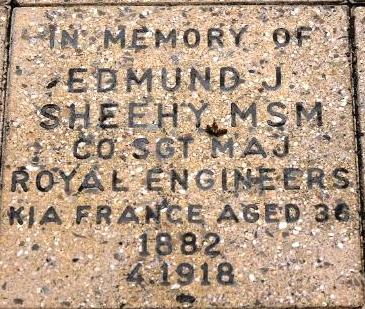
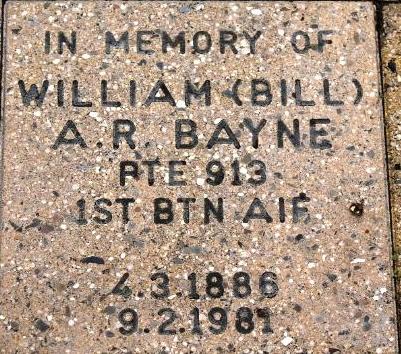
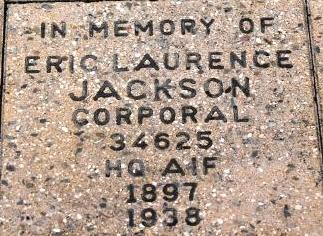
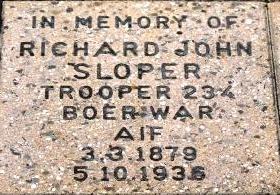
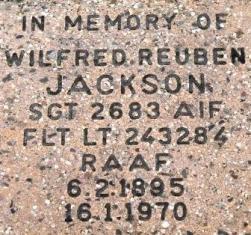
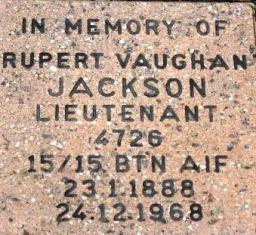
Mona Vale Village Park Memorial

The Porter Family- Newport: Five Soldier Brothers Who Served During World War - Anzac Day 2016 Tribute - A J Guesdon, 2016